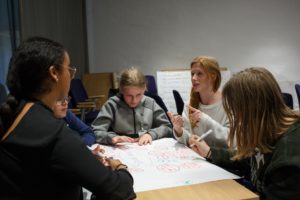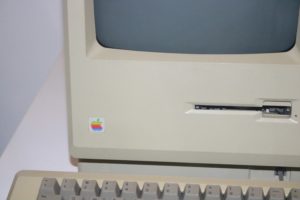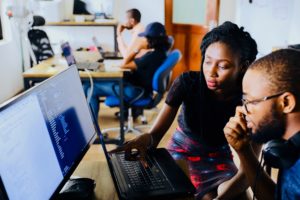Q: How would you describe the historical and theoretical trends in k-12 open and distributed learning? What did you already know, what do you know now based on the course readings and activities, what do you hope to learn?
What did I already Know?
Before reading this week’s articles I was only familiar with open learning. I knew the 60s civil rights movement changed education to become more collaborative, to break down classroom walls, and there was a momentary shift that called for student led learning.

Photo by Edvin Johansson on Unsplash
This idea was supported by Roberts et. al when stating, “originally, OEP was known as opening learning, a movement based on the belief that learners have barriers imposed on them due to a closed learning environment” ( Roberts et. al., 2018, p.528).
What do I know now based on the readings?
Open education was first introduced in Canada by Paquette who fought for liberty, choice, and freedom in education and the role of the teacher to be the guide not the imparter of knowledge (Roberts et. al., 2018, p.529). He stated that the three key elements of open pedagogy are “the physical layout of the classroom, the learning activities, and the teacher intervention” (Roberts et. al., 2018, p.529). His ideas were supported by the likes of Dewey who emphasized the building of learning environments and learning “from and with eachother”; Vygotsky who “described learning as being shaped by sociocultural factors”; and Friere who spoke about informal learning and mutual meaning-making (Roberts et. al., 2018, p.528).
With the introduction of the computer in the 1980s, open learning stressed collaboration and freedom to “retain, reuse, revise, remix and redistribute” (the 5 Rs) in a digital space (Roberts et. al., 2018, p.528). Open learning “became a term to describe flexible learning or asynchronous learning” and paved

Photo by Matthew Mech on Unsplash
the way for other ways of technology-based teaching (Roberts et. al., 2018, p.529).
In 2008 the idea of open learning was further clarified through the eight principles of Open Learning ( Roberts et. al., 2018, p.529):
- Learner-centerdness
- lifelong learning
- flexibility in learning
- removal of barriers to access
- recognition of prior learning experiences and current competencies
- learner support
- expectations of success
- cost-effectiveness

Photo by NESA by Makers on Unsplash
Then in 2015 Hegarty defined OEP as a “process that occurs…when participants engage in open and collaborative networks, communities, and openly shared repositories of information in a structured way to create their own culture of learning” (Roberts et. al., 2018, p.530). Teachers and students, through the 5 Rs, build a community or “culture of learning” that is founded on continued learning, collaboration, and integration of technology. My main takeaway is that open education proponents believe that “every learner deserves access to learning choices regarding time, place, medium, and content”, pioneered the idea of a more collaborative environment between teacher and student, and this bled into technology-led learning when it came to the scene (Roberts et. al., 2018, p.530)
Through technology innovation and its adoption in education, other types of learning have come about, for instance, online learning or e-learning. In BC, many e-learning type ideas fall under the category of distributed learning. Many of these terms have multiple definitions, depending on the province that is being discussed, making it hard to nail down the true differences in these ways of teaching. Therefore, the history of distributed learning is quite convoluted and dense. Distributed learning seems to be a less extreme version of open learning as it encompasses different ways of utilizing technology that do not necessarily push privacy and copyright laws.
The first virtual school in Canada was the Avon Maitland Distance Education Centre in Ontario in 1994 with its first official class in 1997, with many following in its footsteps (Barbour, M & Labonte, R.,2018 p.603). Canda, having the highest per capita E-learning enrollments, and being the first country to use online learning, were pioneers in the field of online learning (Barbour & Labonte, 2018 p.603). Despite this, funding, undefined authority and lack of unification in the E-learning arena have stunted its growth (Barbour, M & Labonte, R., 2018 p.607-611).
What I want to know?
Can blended learning be done all in a brick-and-mortar school but half of the learning be done in-front of a teacher and half in-front of a computer?
Sources
Barbour, M & Labonte, R. (2018) An Overview of
eLearning Organizations and Practices in Canada. In
R. Ferdig & K. Kennedy (Eds.), Handbook of research
on K-12 online and blended learning (pp. 600-616).
Pittsburgh, PA: Carnegie Mellon University ETC Press.
Roberts, V. , Blomgren, C. Ishmael, K. & Graham, L. (2018) Open Educational Practices in K-12 Online and Blended Learning Environments. In R. Ferdig & K.Kennedy (Eds.), Handbook of research on K-12 online and blended learning (pp. 527–544). Pittsburgh, PA: Carnegie Mellon University ETC Press.

hgus123
EDCI 339 Feedback:
I thought that this blog post did a fantastic job of summarizing the key historical aspects of open-learning! I really like how you formatted your blog and broke down the question into headings which makes it straightforward for the reader to understand. One recommendation I have for you is maybe trying to link the second reading by Barbour and Labonte more towards the first reading. I know I also struggled to connect them as their topics are quite different, but I leave that up to you! There is also the article by Bates that you may want to consider adding as it talks about the four learning theories which could be tied into the section with Dewey and Vygotsky as they are the founding people of those concepts. I also noticed that in your second last paragraph, you included the first initial of the authors in the first and last sentence “(Barbour, M & Labonte, R.,2018 p.603)”. May just want to quickly edit those as they are not necessary for APA format and take up extra words! Overall great work!
alexamclean
Feedback for EDCI 339:
You did a great job displaying your gained knowledge from the readings. There were many quotes that answered the question well and supported your arguments. I found the post a bit choppy between paragraphs and would work to create transitions that make your ideas flow a bit more naturally. I agree with hgus123 that linking the Barbour and Labonte article could strengthen your post. Overall, I found it informative, I would just work on the flow a bit more to make it even better.
sarahbjelde
Hi Lauren, I loved your introduction to your post—it reminded me of our project from our history of education class last year! I also want to say how much I enjoyed reading your post because of the layout that felt smooth and made sense a lot of sense as a reader. Through also incorporating a video into your post, you allowed the viewer to extend and enhance their knowledge beyond the readings. I really enjoyed your final question at the end of the post, I am also wondering the same thing! One thing that could make your post even better is if you formatted your picture below the eight principles of open learning a bit more neatly. If you can work this out and find a nice way to format it, this post would be even more spectacular!